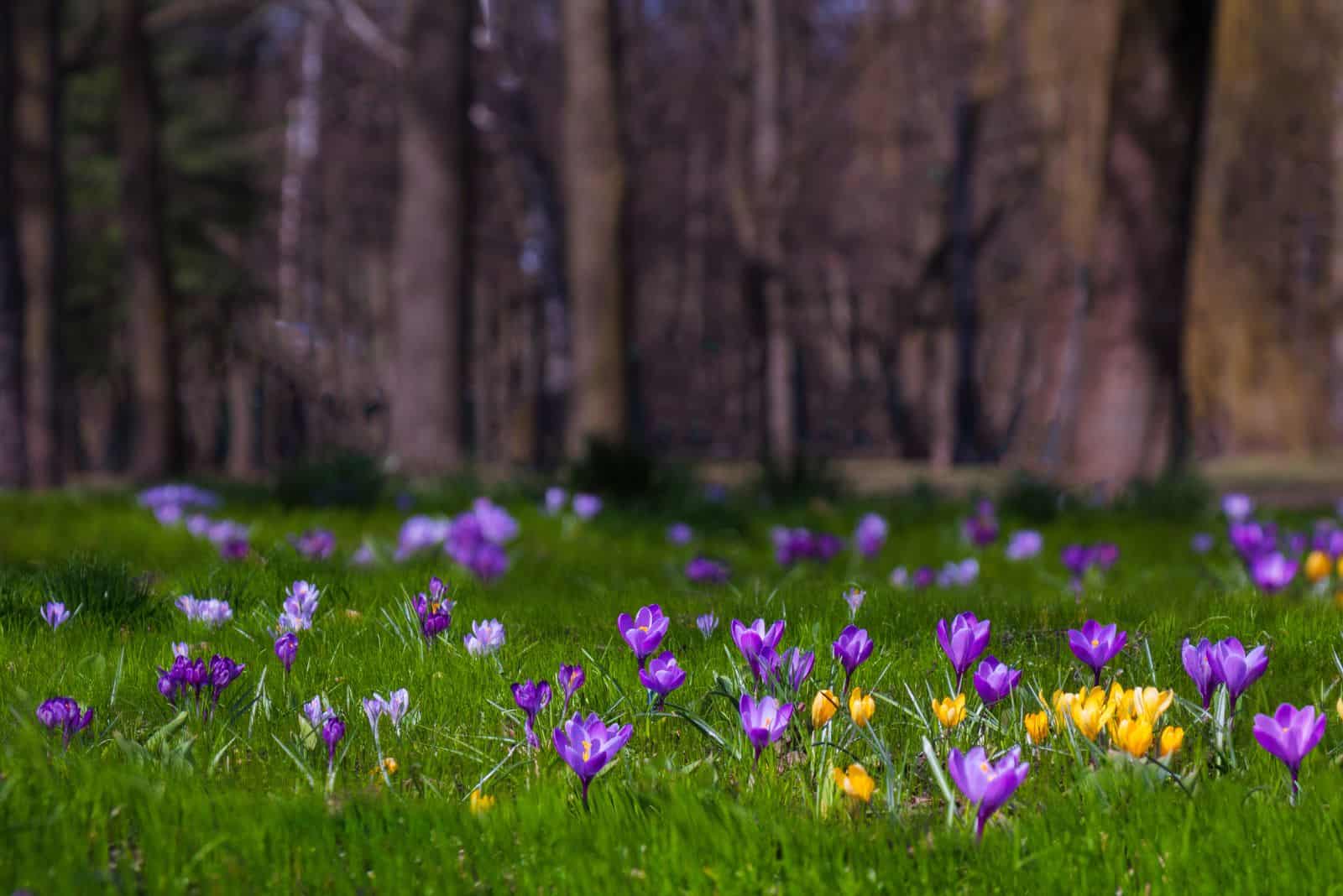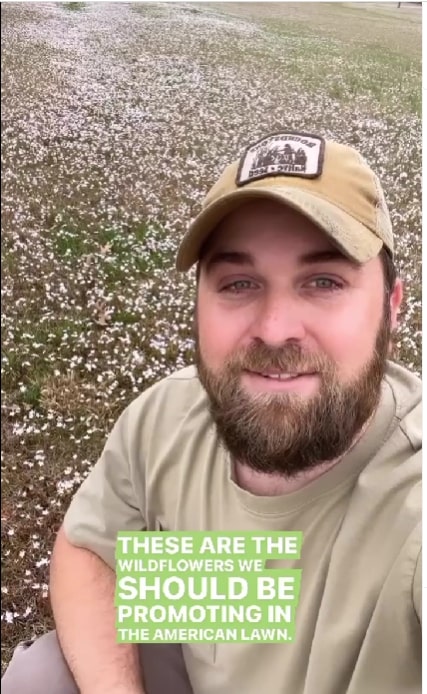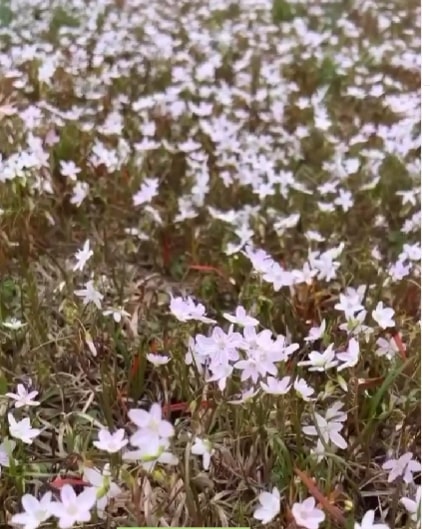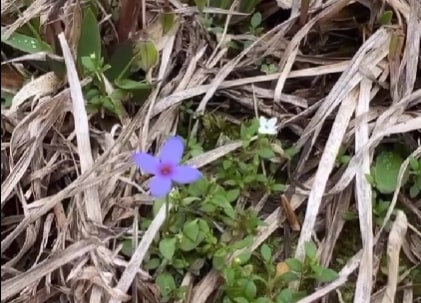Kyle Lybarger (@nativehabitatproject) is a procurement forester who needs you to carefully observe what’s growing in your backyard.
In his popular instagram post, he encourages his followers to start cultivating more native species.
Without them, a key component of our food chain could be lost forever – pollinators!
If we actually want to save North American pollinators, we have to start promoting North American wildflowers, says the conservationist, surrounded by a sea of native spring beauties.
He finishes off by reminding us that these things were here first, urging us to conserve native lawn species.
One such plant is the spring beauty, a North American flower that provides food for over 4,000 native bees.
The Alabama expert started the Native Habitat Project after college to try and help the overlooked grasslands of his home state. Today, he and his team offer help and guidance on which natives are best for each ecosystem.
Lyberger makes an interesting point in his short video. He reminds us that the dandelions commonly found in our yards aren’t native to North America at all, but to Europe.
They’re the favorite food source of European bees, but North American ones prefer flowers that were there from the beginning.
Our native bees need native species, he warns.
Lyberger brings up another native species that sprouts from the February ground – the bluet. This colorful flower is another way to support pollinators. In return, they help our fruits and vegetables produce food and reproduce.
In truth, more than 100 North American crops rely on pollination!
And with climate change, constant use of pesticides, diseases, and lack of food and breeding places impacting pollinators, growing native flower species is more crucial than ever. (1)
If you want to support native wildlife, you have to support native plant communities, says Lyberger, encouraging growers to add more native plants into their backyards.
Some viewers were taken aback by this short video.
“My mind is blown right now. How did I go 33 years of my life thinking dandelions were native?”, is a comment by someone surprised that these flowers come all the way from Europe.
And while some viewers were looking for genuine advice, “What do you recommend for a northern climate?” others followed Kyle Lyberger to the fullest: “I have replaced almost everything in our yard with natives. Doing the same at [my] family’s property.
References:1. Threats to Pollinators (n.d.). U.S. Fish & Wildlife Service.





